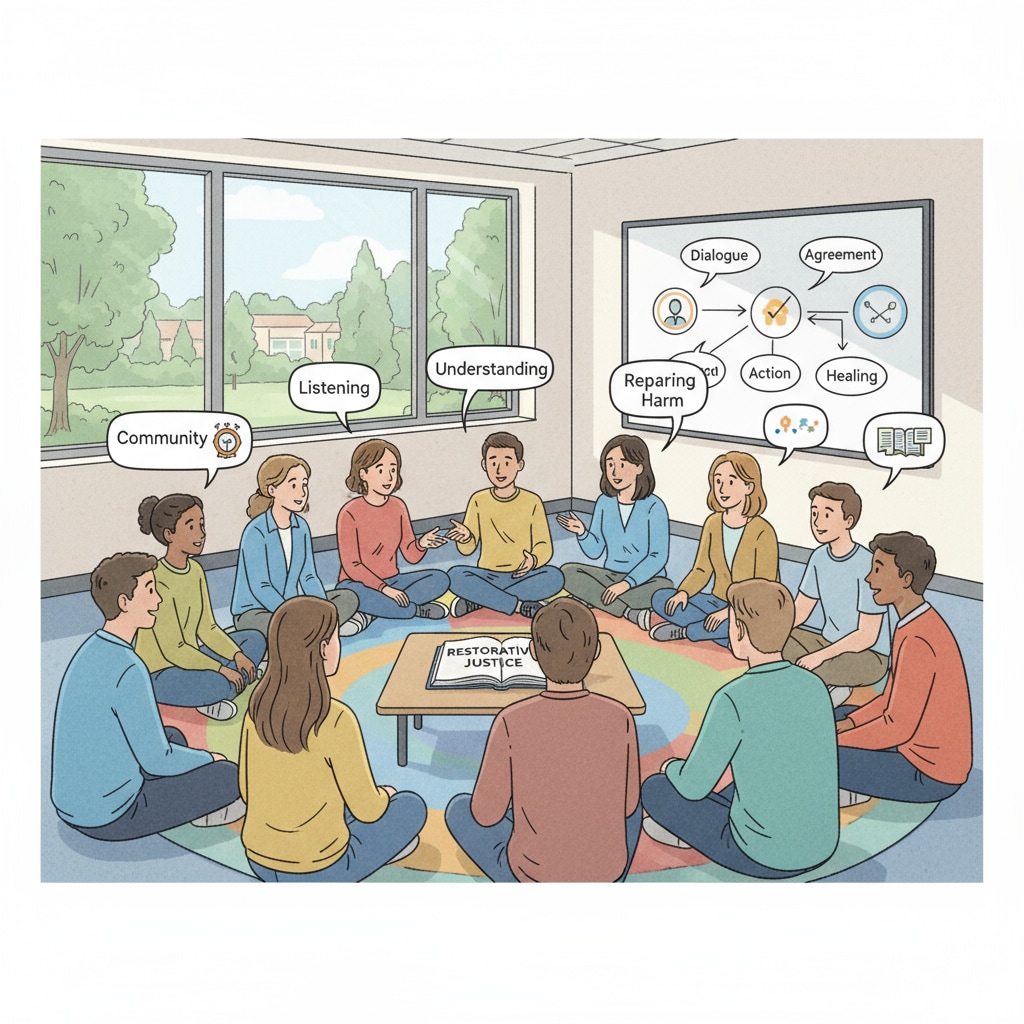Restorative justice, education resources, and school implementation are crucial aspects in modern K12 education. In recent years, restorative justice (RJ) has emerged as a powerful approach to addressing conflicts and building a more inclusive school environment. This article aims to provide educators with practical resources and implementation suggestions to integrate RJ effectively into their school settings.

The Concept of Restorative Justice in Education
Restorative justice in education is about repairing harm, restoring relationships, and promoting healing within the school community. It shifts the focus from punishment to understanding the root causes of conflicts and finding solutions that involve all parties affected. According to Wikipedia’s entry on Restorative Justice, RJ emphasizes the importance of dialogue, accountability, and empathy. For example, instead of suspending a student for misbehavior, a restorative approach might involve a meeting where the student, the victim, and relevant school staff discuss the incident, its impact, and ways to make amends.
Essential Education Resources for Restorative Justice
Educators need various resources to implement RJ successfully. Firstly, training materials are essential. There are many online platforms and organizations that offer courses on restorative justice practices, such as the International Institute for Restorative Practices. These courses teach educators how to facilitate restorative conversations, manage conflicts, and build a culture of respect. Secondly, books and research papers can provide in-depth knowledge. Works by experts in the field can offer insights into the theory and practical applications of RJ. Additionally, peer networks are valuable resources. Connecting with other educators who have implemented RJ can share experiences and learn from each other’s successes and challenges.

Implementing restorative justice in schools requires a systematic approach. Educators should start by raising awareness among staff, students, and parents about the concept and its benefits. This can be done through workshops, assemblies, or information sessions. Next, establish clear procedures for restorative processes, such as how to initiate a restorative meeting and who should be involved. It’s also important to integrate RJ into the curriculum, for example, through social studies or character education classes. Finally, ongoing evaluation and adjustment are necessary to ensure the effectiveness of the RJ program. As stated in Britannica’s article on Restorative Justice, continuous improvement is key to the long-term success of any restorative initiative.
Readability guidance: We’ve used short paragraphs and lists to summarize key points. Each H2 section provides useful information. Passive语态 has been minimized, and transition words like ‘for example’, ‘firstly’,’secondly’ have been used to enhance the flow of the article.


